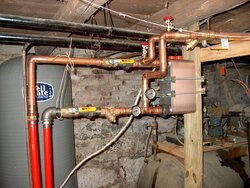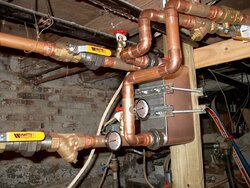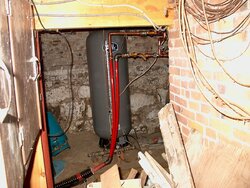Here are a couple shots of where the pex enters my cellar. I've anchored the 2x6 shown here to a 26" long 2X4 sunk into concrete. You can't see it here because it's under the 2x6.
Anyway, I'm confident that the 2x6 won't move, but am wondering if I anchor the pex to the 2x6 near the ball valves, if that will be ok. Anyone had an installation similar to this? Experiences?? According to the specs on the manufacturers website, this stuff is gonna try to grow about 7 inches with a force of 560 lbs if the pipe extends into the room 10 inches. I'm at like 4 feet into the room. Should I shorten the pex as much as possible or will anchoring it down as is be ok? Thoughts?
Anyway, I'm confident that the 2x6 won't move, but am wondering if I anchor the pex to the 2x6 near the ball valves, if that will be ok. Anyone had an installation similar to this? Experiences?? According to the specs on the manufacturers website, this stuff is gonna try to grow about 7 inches with a force of 560 lbs if the pipe extends into the room 10 inches. I'm at like 4 feet into the room. Should I shorten the pex as much as possible or will anchoring it down as is be ok? Thoughts?


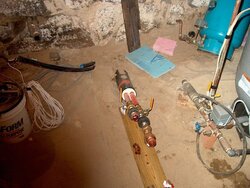
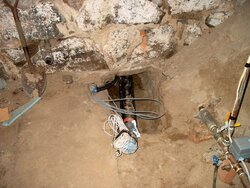
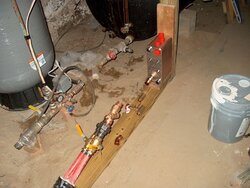

 !
!
